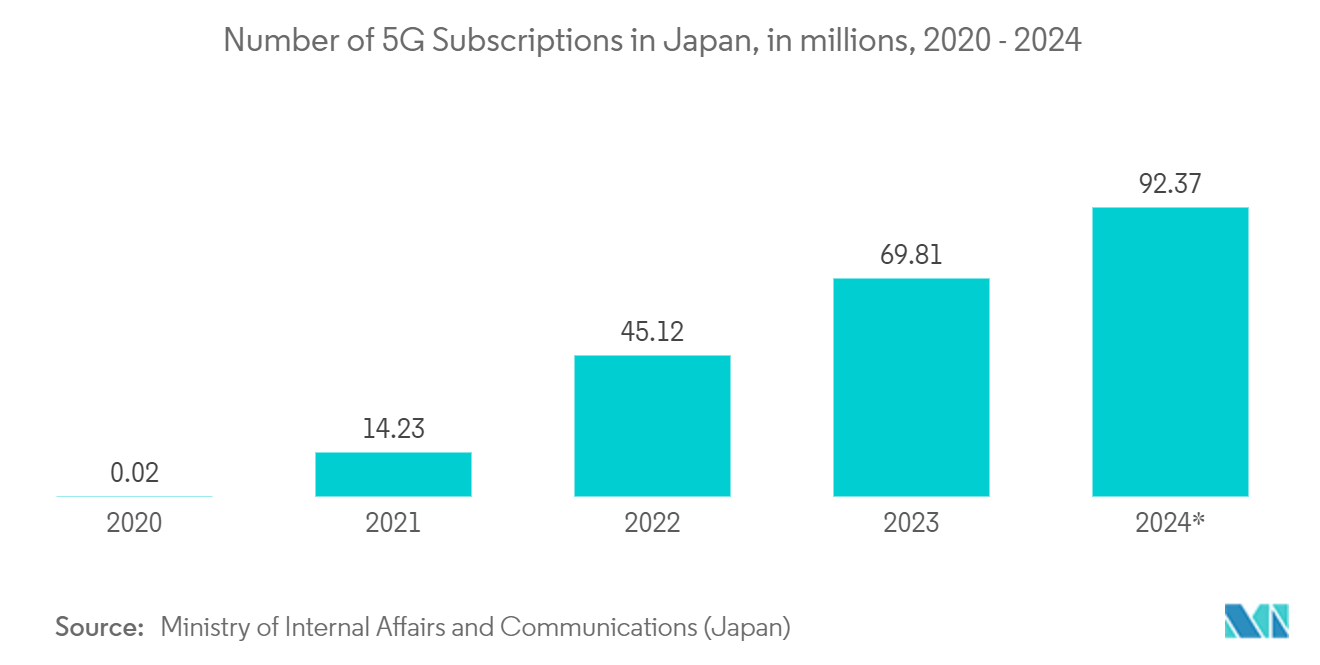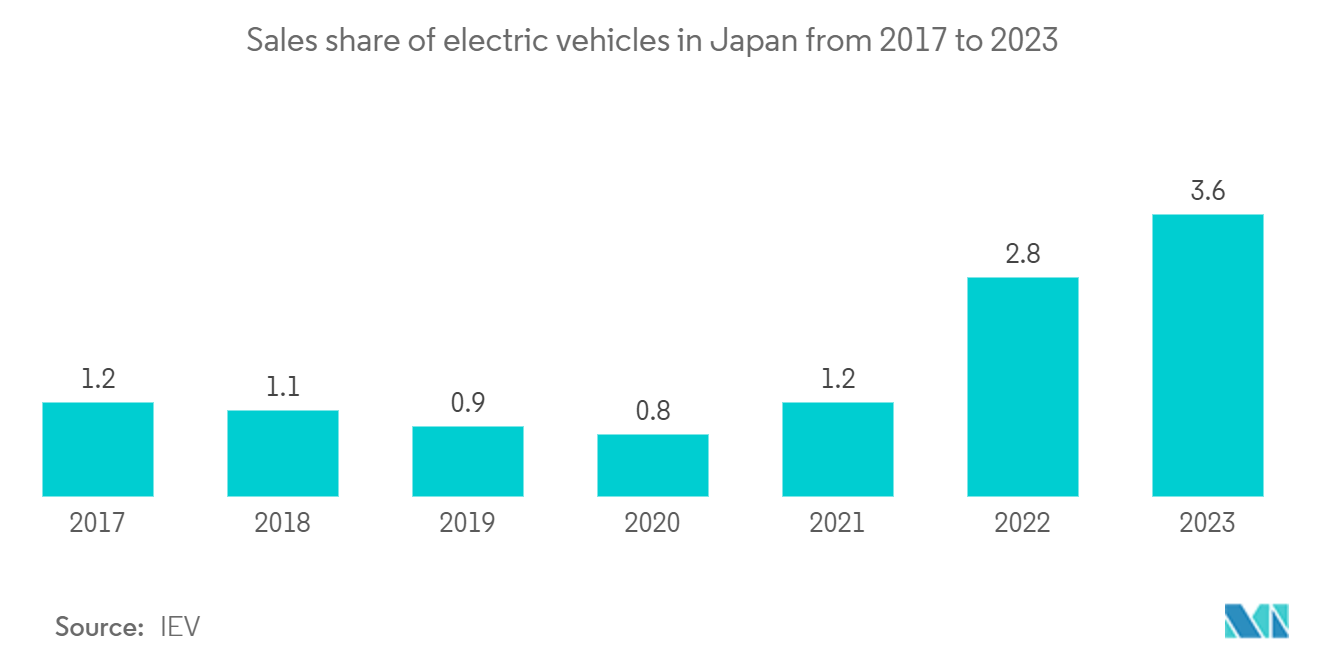Market Trends of Japan Logic Integrated Circuit (IC) Industry
Standard Logic Segment to Occupy a Significant Share
According to their structure, standard logic ICs can usually be classified into TTL (transistor-transistor logic), CMOS logic ( Complementary MOSFET), and BiCMOS logic (bipolar CMOS). Currently, CMOS logic ICs that combine low power consumption and low cost are most commonly used.
CMOS technology finds widespread application in microprocessors, microcontrollers, static RAM, and other digital logic circuits. It is also used for various analog circuits, including image sensors, data converters, and highly integrated transceivers for many types of communication.
For instance, in July 2022, Sony Semiconductor Solutions Corporation announced the release of the IMX675, a 1/3-type CMOS image sensor for security cameras with around 5.12 megapixels that simultaneously provides both full-pixel output of the whole captured image and high-speed output of regions of interest.
Traditionally, CMOS logic circuits were important in implementing main system functions. However, peripheral components are being integrated into LSI chips to improve functionality and reduce the size of electric and electronic applications. CMOS logic ICs are still used in several applications as they are indispensable for glue logic that interfaces different LSI chips and boards.
Though Japan is still at an early stage in its 5G deployment, since the start of 2021, its mobile operators have been accelerating their 5G rollout. For instance, SoftBank aimed to deploy over 50,000 5G base stations and targeted 90% population coverage by the end of March 2022. Similarly, NTT Docomo aims to cover 90% of the Japanese population by March 2024, up from its previous goal of 80%. CMOS RF technologies have now entered the mainstream due to opportunities presented by 5G technologies.

Automotive Application to Grow at a Fast Rate
The automotive industry uses digital circuits for various functions, such as monitoring fuel level, tire pressure, and engine status and providing the indication as an alarm. Logic gates form the fundamental building blocks of digital circuits. Having emerged as the 5th largest automobile market in 2022, as per the German Association of the Automotive Industry or VDA, Japan offers considerable growth opportunities.
The automotive industry is consistently looking forward to wide-scale electrification and advancements. Introducing smart connected technology and autonomous features drives the demand to implement semiconductor chips. Thus, the increased use of circuitry, MCUs, and sensors directs the increased deployment of logic ICs for power regulation and rectification.
Further, according to Japan Automobile Importers Association, the number of imported electric vehicles sold in the country during 2022 rose 65% from a year earlier to reach a record 16,464 units. As such, the automotive industry's migration from fossil fuel to hybrid and electric vehicles positively contributes to market growth.
Moreover, the growing need for better safety and advanced driver assistance systems (ADAS) in cars has accelerated the demand for semiconductors. Intelligent functions, like backup cameras, adaptive cruise control, blind-spot detection, lane change assist, airbag deployment, and emergency braking systems, are made possible by integrating semiconductor technologies.
Currently, the Road Traffic Act in Japan permits Level 3 driving, in which a self-driving system can operate a vehicle most of the time, but the human driver must be ready to take necessary actions in an emergency. However, in April 2022, a new amendment to Japan's Road Traffic Act was published, which introduced a permission system for Level 4 Autonomous Vehicles. Such regulations further help to aid the market growth in the country.


